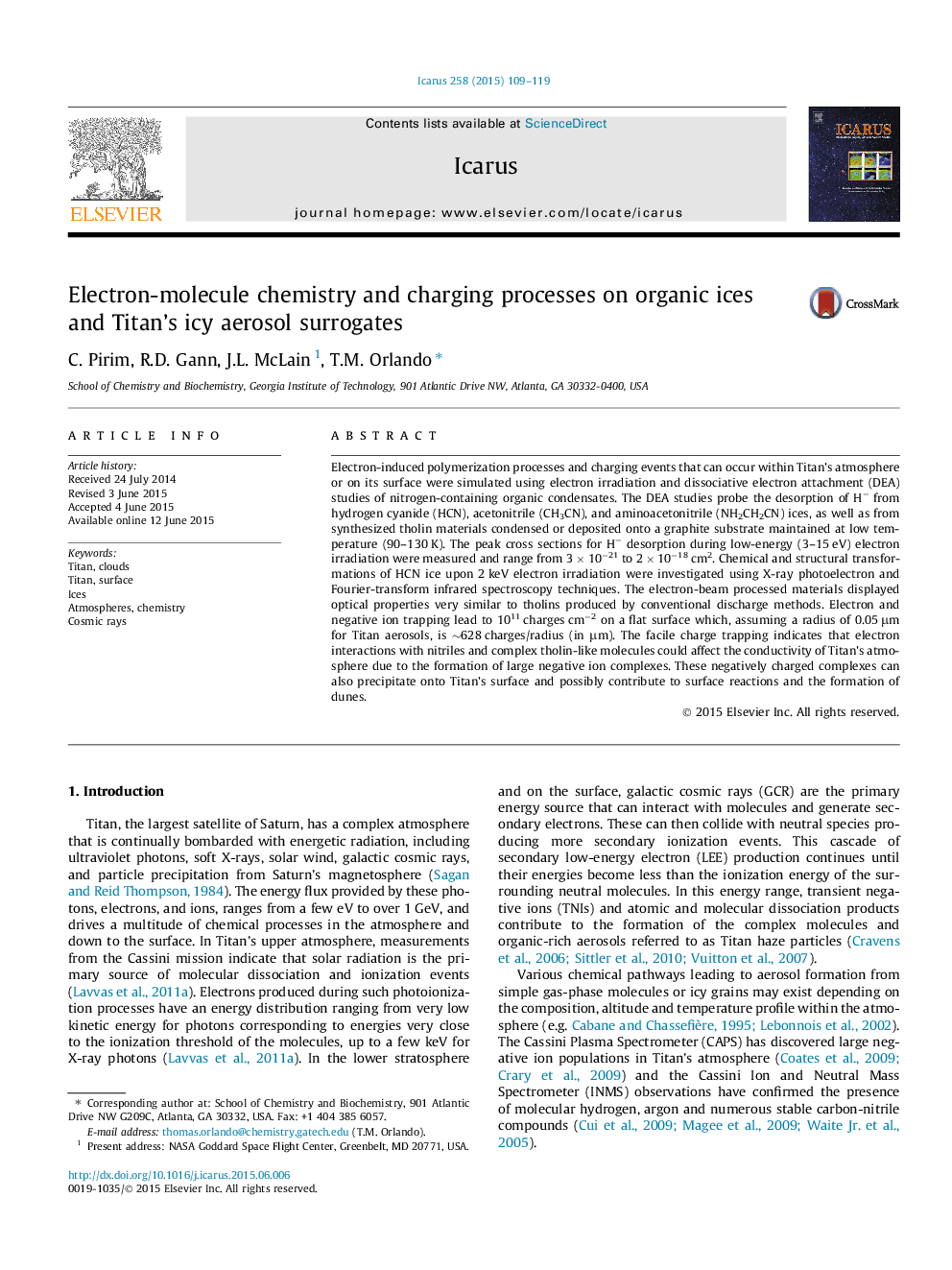| Article ID | Journal | Published Year | Pages | File Type |
|---|---|---|---|---|
| 1773004 | Icarus | 2015 | 11 Pages |
•DEA studies of N-bearing organic condensates were carried out at 90 K and 130 K.•Transformation of 2 keV-irradiated HCN ice was investigated using XPS and FTIR.•Electron trapping was studied on tholins at 130 K.
Electron-induced polymerization processes and charging events that can occur within Titan’s atmosphere or on its surface were simulated using electron irradiation and dissociative electron attachment (DEA) studies of nitrogen-containing organic condensates. The DEA studies probe the desorption of H− from hydrogen cyanide (HCN), acetonitrile (CH3CN), and aminoacetonitrile (NH2CH2CN) ices, as well as from synthesized tholin materials condensed or deposited onto a graphite substrate maintained at low temperature (90–130 K). The peak cross sections for H− desorption during low-energy (3–15 eV) electron irradiation were measured and range from 3 × 10−21 to 2 × 10−18 cm2. Chemical and structural transformations of HCN ice upon 2 keV electron irradiation were investigated using X-ray photoelectron and Fourier-transform infrared spectroscopy techniques. The electron-beam processed materials displayed optical properties very similar to tholins produced by conventional discharge methods. Electron and negative ion trapping lead to 1011 charges cm−2 on a flat surface which, assuming a radius of 0.05 μm for Titan aerosols, is ∼628 charges/radius (in μm). The facile charge trapping indicates that electron interactions with nitriles and complex tholin-like molecules could affect the conductivity of Titan’s atmosphere due to the formation of large negative ion complexes. These negatively charged complexes can also precipitate onto Titan’s surface and possibly contribute to surface reactions and the formation of dunes.
